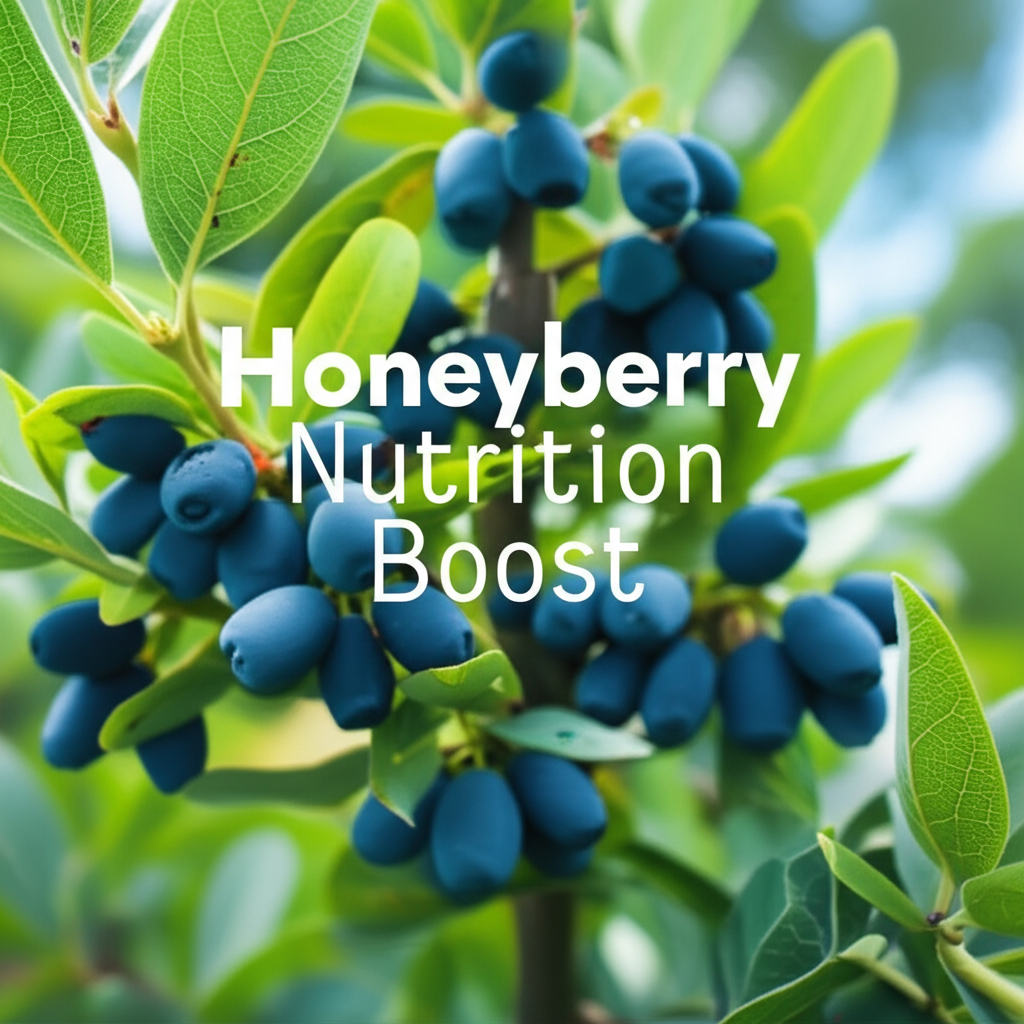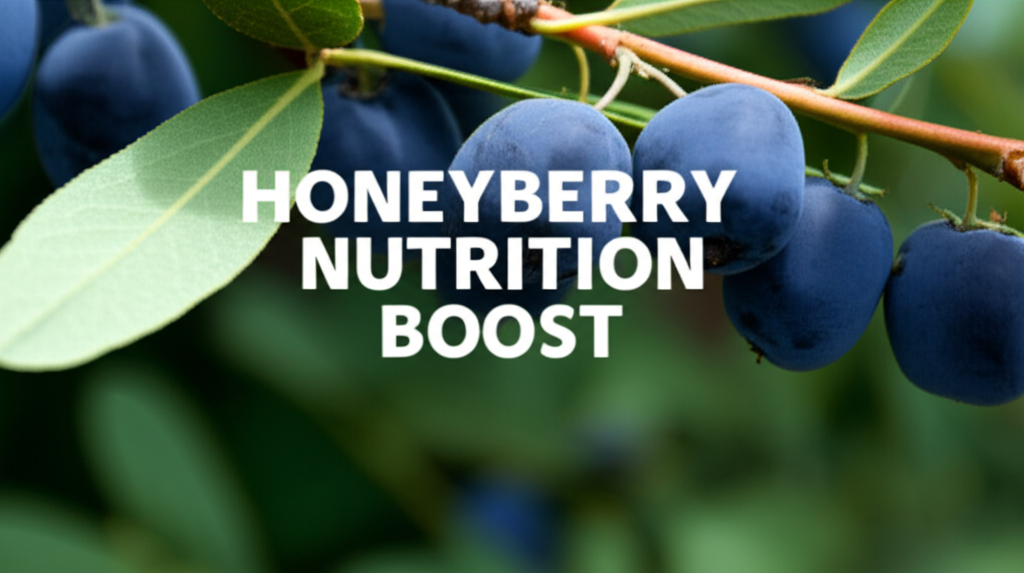Honeyberries, also known as Haskaps or Lonicera caeruleas, are gaining significant traction in the world of superfoods. These small, elongated berries, often described as a cross between a blueberry and a raspberry, pack a powerful nutritional punch. Originating from the northern hemisphere, these resilient shrubs thrive in colder climates, producing an abundance of antioxidant-rich fruit. Beyond their unique sweet-tart flavor, honeyberries offer a compelling array of health benefits, making them a worthy addition to any health-conscious diet. This comprehensive guide delves into the remarkable nutritional profile of honeyberry shrubs and the science-backed benefits they provide.
The Nutritional Powerhouse: What Makes Honeyberries So Special?
Honeyberries are a treasure trove of essential vitamins, minerals, and potent plant compounds that contribute to overall well-being. Their vibrant blue-purple hue is a clear indicator of their high anthocyanin content, a powerful antioxidant responsible for many of their health-promoting properties.
Vitamins: A Boost for Your Immune System and Beyond
These little berries are a good source of several key vitamins crucial for bodily functions:
- Vitamin C: Essential for immune system function, collagen production, and antioxidant defense, vitamin C in honeyberries helps protect cells from damage.
- Vitamin A: Important for vision, skin health, and immune function, vitamin A plays a vital role in maintaining healthy eyesight, particularly in low light.
- B Vitamins: While present in smaller amounts, honeyberries contain various B vitamins like B1 (thiamine), B2 (riboflavin), and B3 (niacin), which are crucial for energy metabolism and nervous system function.
Minerals: Supporting Bone Health and Electrolyte Balance
Honeyberries contribute to your daily mineral intake, supporting various physiological processes:
- Potassium: Plays a critical role in regulating blood pressure and maintaining fluid balance, potassium helps counteract the effects of sodium.
- Manganese: Involved in bone formation, metabolism, and antioxidant defense, manganese is an essential trace mineral.
- Iron: While not a primary source, honeyberries do contain a small amount of iron, which is vital for oxygen transport in the blood.
Antioxidants: The Unsung Heroes of Honeyberry Nutrition
The true star of honeyberry nutrition lies in their exceptional antioxidant capacity. These compounds combat oxidative stress, a cellular process linked to aging and chronic diseases.
- Anthocyanins: These are the most abundant and well-studied antioxidants in honeyberries. They are responsible for the deep blue-purple color and are potent anti-inflammatories, neuroprotective agents, and cardioprotective compounds.
- Flavonoids: Beyond anthocyanins, honeyberries contain other flavonoids like quercetin and kaempferol, which exhibit antioxidant and anti-inflammatory effects.
- Phenolic Acids: Compounds like chlorogenic acid contribute to the overall antioxidant activity, potentially offering benefits for metabolic health.
Key Nutritional Facts of Honeyberry Shrubs

To further illustrate the impressive nutritional profile of honeyberry shrubs, consider this breakdown of their key components per 100 grams of fresh fruit:
| Nutrient | Approximate Amount (per 100g) |
|---|---|
| Calories | 55 kcal |
| Carbohydrates | 13.2g |
| Fiber | 3.8g |
| Sugars | 8.1g |
| Protein | 1.0g |
| Fat | 0.4g |
| Vitamin C | 40-60 mg |
| Manganese | 0.3 mg |
| Potassium | 150 mg |
| Anthocyanins | Varies (high concentration) |
Note: Nutritional values can vary slightly depending on the specific variety of honeyberry, growing conditions, and ripeness.
Health Benefits Backed by Science
The rich nutritional content of honeyberries translates into a wide range of tangible health benefits, supported by ongoing research.
1. Potent Antioxidant and Anti-Inflammatory Effects
The high concentration of anthocyanins and other antioxidants in honeyberries is central to their health-promoting capabilities. Oxidative stress, caused by an imbalance between free radicals and antioxidants, is implicated in numerous chronic diseases, including heart disease, cancer, and neurodegenerative disorders.
- Combating Free Radicals: Antioxidants neutralize harmful free radicals, preventing cellular damage.
- Reducing Inflammation: Chronic inflammation is a root cause of many diseases. The anti-inflammatory properties of honeyberry compounds can help mitigate this.
2. Cardiovascular Health Support
Emerging research suggests that honeyberries can play a significant role in promoting heart health.
- Blood Pressure Regulation: The potassium content helps maintain healthy blood pressure levels.
- Improving Blood Vessel Function: Anthocyanins have been shown to improve the elasticity and function of blood vessels, potentially reducing the risk of atherosclerosis.
- Cholesterol Management: Some studies indicate that honeyberry consumption may contribute to healthier cholesterol profiles.
3. Cognitive Function and Brain Health
The neuroprotective effects of honeyberries are a particularly exciting area of research.
- Enhanced Memory and Learning: Antioxidants can protect brain cells from damage and inflammation, potentially leading to improved cognitive function, including memory and learning.
- Protection Against Neurodegenerative Diseases: By combating oxidative stress and inflammation in the brain, honeyberries may offer a protective effect against age-related cognitive decline and diseases like Alzheimer’s.
4. Immune System Enhancement
The vitamin C content in honeyberries is a well-known immune booster.
- Supporting Immune Cell Function: Vitamin C is crucial for the proper functioning of immune cells, helping the body fight off infections.
- Antiviral and Antibacterial Properties: Some compounds found in honeyberries may also possess inherent antiviral and antibacterial activity.
5. Eye Health Protection
The antioxidants in honeyberries, particularly anthocyanins, are beneficial for vision.
- Improving Night Vision: Anthocyanins are thought to support the regeneration of rhodopsin, a pigment in the retina that aids in low-light vision.
- Protecting Against Age-Related Macular Degeneration: The antioxidant power of honeyberries can help protect the macula from damage caused by free radicals.
6. Digestive Health and Gut Microbiome
The fiber content in honeyberries contributes to a healthy digestive system.
- Promoting Regularity: Dietary fiber aids in smooth digestion and helps prevent constipation.
- Supporting Gut Bacteria: Fiber can act as a prebiotic, feeding beneficial bacteria in the gut, which is crucial for overall health.
Integrating Honeyberries into Your Diet: Practical Tips and Considerations
Incorporating honeyberries into your diet is straightforward, given their versatility and delicious flavor.
How to Enjoy Honeyberries
These adaptable berries can be consumed in a variety of ways:
- Fresh: Enjoy them straight from the shrub or as a healthy snack.
- Smoothies: Blend them into your favorite smoothie for an antioxidant boost and vibrant color.
- Yogurt and Oatmeal: Top your morning yogurt or oatmeal with a handful of fresh honeyberries.
- Baking: Use them in muffins, pies, crumbles, or jams.
- Juices and Beverages: Incorporate them into fresh juices or infused water.
When to Harvest and How to Store
Honeyberries typically ripen in late spring to early summer, depending on the region. Their harvest window is relatively short, making proper storage essential.
- Harvesting: Pick the berries when they are fully colored and slightly soft to the touch. They should detach easily from the stem.
- Storage: Fresh honeyberries can be stored in the refrigerator for up to a week. For longer storage, they freeze exceptionally well. Spread them in a single layer on a baking sheet, freeze until solid, and then transfer to an airtight container or freezer bag.
Comparison with Other Berries
While many berries offer health benefits, honeyberries stand out due to their unique nutritional profile and potential advantages.
| Feature | Honeyberry (Haskap) | Blueberry | Raspberry | Strawberry |
|---|---|---|---|---|
| Primary Antioxidants | Anthocyanins, Flavonoids | Anthocyanins | Ellagic Acid, Anthocyanins | Anthocyanins, Vitamin C |
| Vitamin C Content | High | Moderate | High | Very High |
| Fiber Content | Good | Good | Very Good | Good |
| Flavor Profile | Sweet-tart, slightly astringent | Sweet, mild | Sweet-tart, slightly tart | Sweet, slightly acidic |
| Growth Climate | Cold-hardy | Moderate | Moderate | Moderate |
Pros and Cons of Honeyberry Consumption
As with any food, there are advantages and potential considerations when it comes to honeyberries.
| Pros | Cons |
|---|---|
| Exceptionally high antioxidant content, particularly anthocyanins. | Seasonal availability and relatively short shelf life when fresh. |
| Supports cardiovascular health and may help regulate blood pressure. | Can be tart if not fully ripe, which may not appeal to all palates. |
| Potential cognitive benefits, including improved memory and brain health. | Availability may be limited depending on your geographical location. |
| Good source of Vitamin C and fiber. | Some varieties can have a slightly astringent aftertaste. |
| Versatile in culinary applications. | Less commonly found in mainstream grocery stores compared to other berries. |
| Resilient and easy to grow in colder climates. |
The Future of Honeyberries: A Promising Superfood
As research into the benefits of honeyberries continues to grow, their popularity is expected to soar. Their exceptional nutritional density, coupled with their resilience and unique flavor, positions them as a true superfood for the future. From supporting heart health to enhancing cognitive function, the science behind these remarkable berries is compelling.
Cultivation and Availability
The cultivation of honeyberry shrubs is expanding, making them increasingly accessible to consumers. Their ability to thrive in challenging climates means they can be grown in regions where other berries struggle. This accessibility is crucial for wider adoption and for harnessing their full nutritional potential.
Ongoing Research and Development
Scientists are continuously exploring the diverse health benefits of honeyberries, delving deeper into the specific mechanisms by which their compounds promote well-being. Future research will likely uncover even more remarkable applications for this potent fruit, potentially leading to new therapeutic uses and dietary recommendations.
Conclusion: Embrace the Sweet, Healthy Power of Honeyberries
Honeyberry shrubs offer a compelling package of nutritional benefits that are hard to ignore. Their rich antioxidant profile, coupled with essential vitamins and minerals, makes them a valuable addition to a healthy and balanced diet. From supporting cardiovascular function and cognitive health to boosting the immune system, the advantages of incorporating these sweet and tart berries into your meals are numerous. As you seek out new ways to nourish your body and enhance your well-being, look no further than the extraordinary honeyberry – a true testament to nature’s bounty.


